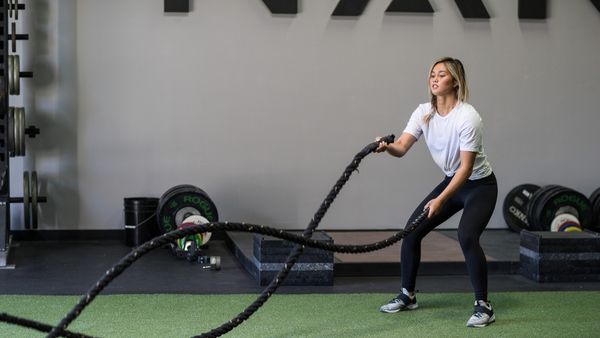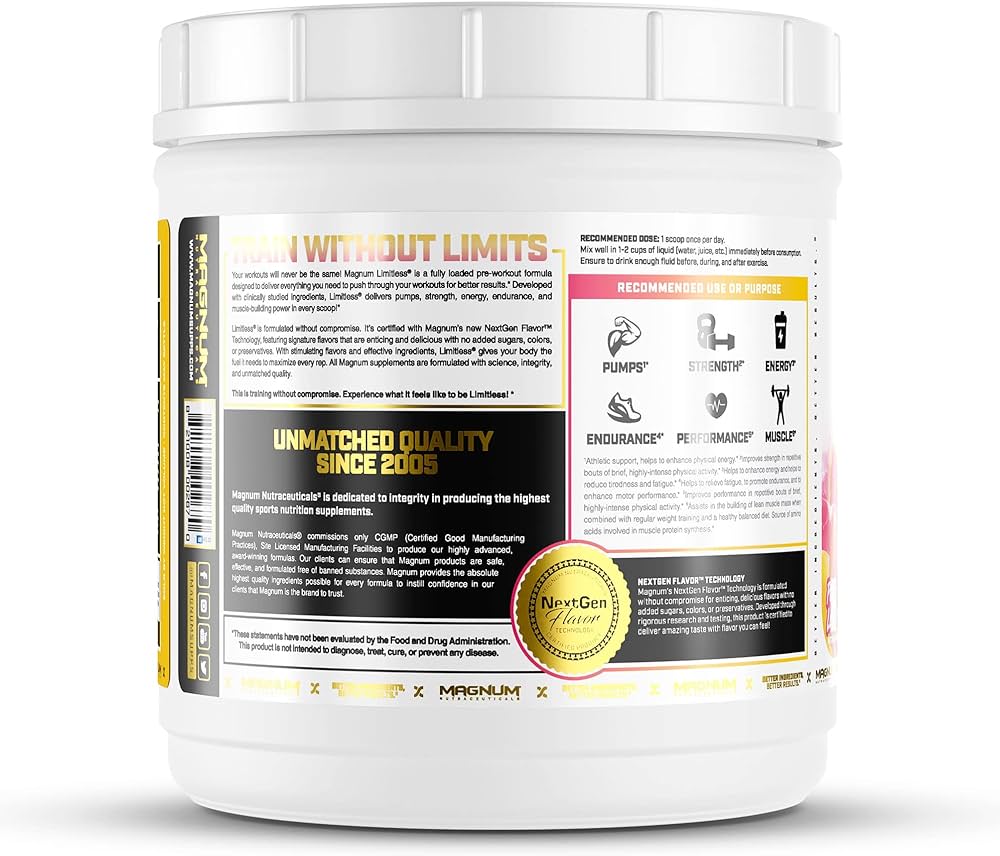Muscular endurance activities improve the ability of muscles to sustain repeated contractions. These exercises enhance long-term muscle performance.
Strengthening muscular endurance is integral for daily tasks and athletic performance, directly impacting overall physical fitness. Engaging in regular activities such as swimming, cycling, and bodyweight exercises like planks and squats can significantly increase your endurance levels. This form of training not only bolsters stamina but also contributes to better posture, injury prevention, and higher metabolic rates, which aid in weight management.
Tailoring a workout routine to incorporate a variety of endurance exercises can provide a balanced approach to achieving a stronger, more resilient body. Ensuring your regime includes muscular endurance activities is crucial for everyone from fitness enthusiasts to professional athletes looking to maintain peak condition.
Introduction To Muscular Endurance
Muscular endurance stands as a cornerstone of a healthy lifestyle. It’s the ability of muscles to exert force consistently over a period. This endurance is key for daily activities and sports.
The Importance Of Stamina
Stamina is crucial for both physical and mental tasks. It lets us perform better for longer. Having good stamina means less fatigue. A more active life results from this.
Benefits Of Enhanced Muscular Endurance
- Improves overall health
- Boosts metabolic rate
- Reduces injury risk
- Enhances mental toughness
With greater endurance, our bodies handle stress better. We also enjoy a higher quality of life. The heart and lungs work better too.

Credit: www.performingdancearts.ca
Key Components Of Muscular Stamina
Muscular stamina is the ability of your muscles to exert force consistently and repetitively over a period of time. Powerful muscular endurance is key for daily activities, sports, and overall physical health. Two main elements contribute greatly to this endurance: Type I muscle fibers and aerobic capacity. Understanding these components will help you improve your muscular stamina effectively.
Type I Muscle Fibers Explained
Type I muscle fibers, also known as slow-twitch fibers, are crucial for long-lasting muscle activities. These fibers are designed to work for a long time without getting tired. They are your muscles’ energy-efficient powerhouses. Here’s why they are important:
- They use oxygen to produce energy for muscle contractions.
- They are more resistant to fatigue compared to their counterpart, Type II fibers.
- They support activities like long-distance running, swimming, and cycling.
The Role Of Aerobic Capacity
Your aerobic capacity, or the ability of your heart and lungs to deliver oxygen to muscles, is essential for muscular stamina. Improved aerobic capacity increases the endurance of Type I muscle fibers. A higher aerobic capacity means:
| Benefits | Examples |
|---|---|
| Better oxygen utilization | Longer runs without exhaustion |
| Efficient energy production | Sustained performance in sports |
| Reduced fatigue | Ability to perform daily tasks without tiring |
Engaging in activities that boost aerobic capacity, like brisk walking or dancing, will enhance your muscular endurance significantly.
Assessing Your Current Endurance Level
Understanding your muscular endurance status sets the stage for improvement. Before embarking on new exercise routines, it’s crucial to know where you stand. This section of the blog will guide you through the process of assessing your current muscular endurance. It helps you measure your stamina and interpret your results effectively.
Simple Tests To Measure Stamina
Testing your endurance can be straightforward. Below is a list of easy tests you can try:
- Push-up Test: Count how many push-ups you can do without stopping.
- Plank Test: Hold a plank and time how long you can maintain it with proper form.
- Sit-up Test: Measure how many sit-ups you can accomplish in one minute.
- Squat Test: Record the number of squats you can complete in a specific time frame.
- Wall Sit: Time yourself on how long you can hold a wall sit position.
Record your results for comparison with future tests to track progress.
Interpreting Your Baseline Results
Baseline results offer a starting point. To interpret your scores, compare them against standardized endurance charts or check with a fitness professional. Understanding your current level is key to setting realistic goals for improvement.
| Activity | Average Score | Target for Improvement |
|---|---|---|
| Push-ups | Men: 15-20, Women: 10-15 | Increase by 10% |
| Plank | Men: 60 seconds, Women: 60 seconds | Extend by 15 seconds |
| Sit-ups | Men: 30-40, Women: 20-30 | Do 5 more |
| Squats | Men: 25-35, Women: 20-30 | Do 5 more |
| Wall Sit | Men: 30 seconds, Women: 30 seconds | Hold 10 seconds longer |
Use these guidelines to help decide your next fitness milestones. Aim for gradual increases to build endurance safely and effectively. Remember, endurance building is a marathon, not a sprint. Patience and consistency are your allies.
Foundational Exercises To Build Stamina
Ready to boost endurance? Start with core activities. They form your fitness backbone. These exercises build lasting stamina. Let’s dive into two key areas: bodyweight training and cardio.
Bodyweight Training
Bodyweight exercises are your toolkit for stamina. No equipment is needed, just motivation.
- Push-ups: Sculpt arms and chest. Start on knees if needed.
- Squats: Build leg and core strength. Keep your back straight.
- Planks: Core powerhouse. Aim for longer holds as you progress.
| Exercise | Benefits | Reps/Sets |
|---|---|---|
| Push-ups | Arm and chest building | 3 sets of 10-15 |
| Squats | Leg and core strengthening | 3 sets of 12-20 |
| Planks | Core endurance | 3 sets of 30s-1min |
Cardiovascular Activities
Cardio workouts raise your heart rate. You’ll breathe harder and build endurance.
- Running: Start with short distances. Increase as you get fitter.
- Cycling: Great for joints. Fun and effective.
- Swimming: Whole-body workout. Low-impact on the body.
Combine these activities into your weekly plan. Aim for consistent progress. Patience wins the race!
High-intensity Interval Training (hiit)
High-Intensity Interval Training, or HIIT, stands out in the fitness world. Short, strong bursts of action are interspersed with predetermined intervals of less intense activity or total rest during this effective workout. HIIT skyrocketed in popularity due to its efficiency and effectiveness in building muscular endurance and overall fitness.
Principles Of Hiit
Understanding the core principles of HIIT is crucial for optimal results. The foundation lies in pushing your limits through intense phases followed by recovery periods.
- Intensity: Workouts challenge your body at 80-95% of your maximal heart rate.
- Intervals: Alternating between 20 seconds to several minutes of high and low intensity.
- Recovery: Short periods of rest or low activity to prepare for the next intense set.
- Duration: Typically, a HIIT session lasts 20-30 minutes.
- Frequency: Aim for 2-3 HIIT workouts per week to avoid overtraining.
Customizing Hiit For Endurance
To tailor HIIT for muscular endurance, focus on the structure of intervals. Create a balance between exercise and rest that challenges the muscles’ ability to sustain effort.
| Interval Length | Intensity | Recovery | Repeats |
|---|---|---|---|
| 1-2 minutes | 70-75% maximal heart rate | Equal to interval | 10-15 cycles |
| 2-3 minutes | 60-70% maximal heart rate | Half the interval | 6-10 cycles |
Start with shorter intervals. Gradually increase the length and intensity. This approach ensures continuous progress without overtraining. Track your performance for data-driven adjustments. A personalized HIIT program can greatly boost muscular endurance and overall stamina.

Resistance Training’s Role In Endurance
Resistance training plays a crucial part in boosting muscular endurance. It strengthens muscles, allowing them to perform repetitive tasks over time without feeling tired. This type of training is not just about bulking up; it’s about building the ability to sustain activities like running, swimming, or cycling for longer periods.
Choosing The Right Weights
Selecting the appropriate weight is key to effective resistance training. The weight should be enough to challenge muscles while still maintaining proper form. Use these guidelines:
- Begin with lighter weights if you are a newbie.
- Gradually increase your weight to avoid injury.
- Aim for a weight that allows you to complete reps with effort without straining.
Repetition And Set Strategies
Aiming for the optimal number of repetitions and sets can enhance muscular endurance:
| Set | Reps | Rest Interval |
|---|---|---|
| 1-3 Sets | 12-20 Reps | 30-90 Seconds |
Follow this repetition and set strategy:
- Start with a warm-up set using light weights.
- Progress to higher reps to build endurance.
- Take short rests between sets for recovery.
- Observe your body and make any necessary adjustments.
Sport-specific Drills For Stamina
Sport-Specific Drills for Stamina are essential exercises tailored to enhance endurance in athletes. These specialized routines boost the ability to sustain physical activity for prolonged periods of time. Engaging in sport-specific drills ensures your muscles adapt to the unique demands of your chosen sport, leading to improved performance and stamina.
Drills For Runners
Running demands high muscular endurance. Runners benefit from drills that mimic race conditions and promote cardiovascular strength. Building stamina requires a regular workout.
- Interval Training: Alternate between sprinting and jogging to push the body and improve recovery time.
- Hill Repeats: Run up and down inclines to increase leg strength and power.
- Tempo Runs: Maintain a challenging but steady pace to condition the body for maintaining speed over distance.
Swimmers’ Endurance Workouts
Swimmers require enduring muscle strength in water. Endurance workouts for swimmers focus on lengthening the capacity to perform strokes efficiently.
| Drill Name | Description | Benefits |
|---|---|---|
| Pyramid Sets | Increase distance with each set, then decrease back down. | Builds long-lasting muscle stamina and breath control. |
| Kick Sets | Use a kickboard and focus on leg propulsion. | Enhances leg strength and develops consistent kicking endurance. |
| Negative Split | Swim second half of a set faster than the first. | Improves pace management and finishing strength. |

Nutrition And Hydration For Endurance
Nutrition and hydration play vital roles in maintaining muscular endurance. The right foods and fluids support long-lasting energy. They also help in recovery and performance. This section dives into the best nutrition practices for endurance activities.
Best Foods For Sustained Energy
For long periods of physical activity, the body needs fuel. This fuel comes from foods that provide steady and slow-releasing energy. Consider the following for sustained physical performance:
- Complex Carbohydrates: Foods like whole grains, legumes, and starchy vegetables release energy over time.
- Lean Proteins: Chicken, fish, and plant-based proteins aid muscle repair and growth.
- Healthy Fats: Avocados, nuts, and seeds offer long-lasting energy without spiking blood sugar.
Combining these foods in meals keeps energy levels stable. Try a balance of these nutrients before a workout.
Hydration Before, During, And After Exercise
Staying hydrated is essential for endurance. Water supports every system in the body, including muscle function. Follow these hydration tips:
- Pre-Exercise: Drink at least 500 ml of water two hours before activity.
- During Exercise: Sip on water or a sports drink every 15-20 minutes to replace fluids lost by sweating.
- Post-Exercise: Rehydrate with water and electrolytes to restore balance.
| Timing | Water Intake |
|---|---|
| Before Exercise | 500 ml |
| During Exercise | Drink regularly |
| After Exercise | Replenish fully |
Remember, proper hydration goes beyond water. Electrolytes like sodium and potassium are also lost in sweat. Consider a sports drink with electrolytes during longer activities.
Recovery Strategies To Enhance Stamina
Building stamina isn’t just about pushing hard in every workout. Recovery plays a crucial role in enhancing your muscular endurance. Here are some strategies you can use to bounce back stronger and with more stamina.
Importance Of Rest Days
Think of rest days as your body’s time to recharge. Without rest, muscles can’t repair and grow stronger. Aim for at least one full rest day each week to ensure your body has adequate time to recover.
- Bolden to prevent injuries
- Encourage muscle repair
- Promote strength gains
Active Recovery Techniques
Active recovery involves low-intensity exercise post-workout. Consider it a mild prod to aid in your body’s healing process.
| Technique | Benefits |
|---|---|
| Light jogging | Boosts blood flow |
| Swimming | Reduces muscle soreness |
| Yoga | Increases flexibility |
Incorporate active recovery days into your weekly schedule to keep your muscles engaged while still promoting healing and stamina.
Tracking Progress And Setting Goals
Muscular endurance is key for many activities. To get better, you need to track your progress. Set clear goals. This keeps you focused. It’s a map towards fitness success. Let’s dive into how you can monitor endurance gains and adjust goals.
Monitoring Endurance Gains
Seeing your endurance improve feels great. Record your workouts. Note the exercises, reps, and time. Use a fitness app or a simple notebook. Look for patterns. Are you doing more push-ups without stopping? Can you run longer? This data shows your gains.
Compare your results weekly. You might use a table to see progress:
| Week | Push-Ups | Plank (Seconds) | Run (Minutes) |
|---|---|---|---|
| 1 | 15 | 30 | 10 |
| 2 | 20 | 45 | 12 |
| 3 | 25 | 60 | 15 |
Adjusting Goals For Continued Improvement
Goals should grow with you. After hitting a milestone, change your goals. Make them a bit tougher. This helps you keep getting stronger. Aim for more reps or longer duration. Mix in new exercises to challenge your muscles. Keep it fun and interesting.
- Review goals monthly.
- Increase intensity or reps slowly.
- Try new endurance activities.
- Celebrate small victories.
Using SMART goals (Specific, Measurable, Achievable, Relevant, Time-bound) keeps you on the right path.
Common Mistakes To Avoid
Improving muscular endurance takes dedication and the right approach. Yet, many fall into traps that can stall progress. Acknowledging these common mistakes ensures a smoother fitness journey.
Overtraining Risks
Too much exercise can harm you more than help. People often forget that muscles need time to recover after workouts. Overtraining can lead to:
- Increased injury risk
- Stalled progress
- Chronic fatigue
- Weaker immune system
Listen to your body and rest when needed. Balance workouts with recovery days.
Ignoring The Importance Of Flexibility
Flexibility and muscular endurance are partners. Tight muscles can limit performance and increase injury risk. Avoid this mistake by:
- Incorporating stretching
- Using full range of motion during exercises
- Attending yoga classes
Remember that a limber body performs better and stays healthier. Include flexibility training in your routine to boost muscular endurance safely.

Credit: www.medicalnewstoday.com
Advanced Techniques For Seasoned Athletes
Seasoned athletes always seek new challenges and methods to push their limits.
Muscular endurance is key for stellar performance. Upgrading your routine with advanced techniques
can propel you to the next level. Let’s explore some cutting-edge strategies.
Incorporating Plyometrics
Plyometric exercises, or “plyos,” involve powerful, explosive movements.
They boost strength, speed, and endurance simultaneously.
High-intensity jumps, bounds, and hops are common forms.
- Box Jumps: Leap onto a sturdy box and step down.
- Skater Plyos: Mimic a speed skater’s side-to-side movement.
- Burpees: Combine a squat, jump, and push-up in one fluid motion.
Incorporate these three times a week. Start with low reps and increase gradually.
Altitude Training
Training at high altitudes challenges your body differently.
Oxygen levels drop, so your body adapts. It starts to use oxygen more effectively.
| Altitude Level | Oxygen Availability | Training Benefit |
|---|---|---|
| Low | High | Regular endurance |
| Medium | Moderate | Increased red blood cell count |
| High | Low | Peak efficiency in oxygen use |
Aim for two-week stints at high altitudes. Follow with rest and a return to sea level training.
This stimulates endurance gains.

Conclusion: Sustaining Your Gains
Embarking on the journey to enhance muscular endurance is much like planting a garden. Just as a garden requires regular watering, weeding, and care to flourish, so does your body need consistent training and nourishment to sustain muscular gains. This closing section provides pivotal tips to ensure the hard-earned results don’t slip away.
Maintaining Motivation
Staying motivated is key to your fitness journey. Strong motivation turns action into habit. Let’s touch upon strategies to keep that spark alive:
- Set clear, achievable goals
- Reward yourself for milestones
- Track progress visually with charts
- Find an accountability partner
- Mix up routines to dodge boredom
Long-term Commitments To Muscular Endurance
Long-term commitment shifts short-term wins into lifelong habits. Here’s how to lace up for the long run:
- Embed workouts into your weekly schedule
- Gradually increase intensity
- Stay patient and trust the process
- Focus on nutrition to fuel endurance
- Rest to prevent burnout and injuries
Remember, consistency in maintaining your muscular endurance is not a sprint; it’s a marathon. For sustained gains, embrace the lifestyle that aligns with fitness, and your future self will thank you.
Frequently Asked Questions For Muscular Endurance Activities
What Are The 7 Types Of Muscle Endurance?
The seven types of muscle endurance are aerobic, anaerobic, static, dynamic, local, global, and strength endurance. Each focuses on sustaining different muscular actions over time.
What Are Examples Of Muscular Endurance?
Examples of muscular endurance include activities like long-distance running, cycling, swimming, and resistance training exercises such as planks or repetitive weight lifting.
What Exercises Are Good For Muscular Endurance?
Exercises boosting muscular endurance include planks, bodyweight squats, push-ups, cycling, and swimming. Perform high-repetition, low-weight resistance training for optimum results.
What Are 4 Exercises For Endurance?
Four effective endurance exercises are jogging, cycling, swimming, and interval training. These activities boost cardiovascular health and stamina.
Conclusion
Boost your body’s stamina with muscular endurance activities. Diverse options cater to all, promising improved health and daily function. Regular training fosters resilience, empowering you to tackle life’s physical challenges. Begin your journey towards peak muscular stamina now, and reap the lasting benefits.
Embrace the endurance revolution for a stronger tomorrow.

I am a health writer and blogger based in the US and UK. I have been with the health department for six years. And I give advice on various health problems and solutions. I have a lot of experience in health matters and I share it here.

